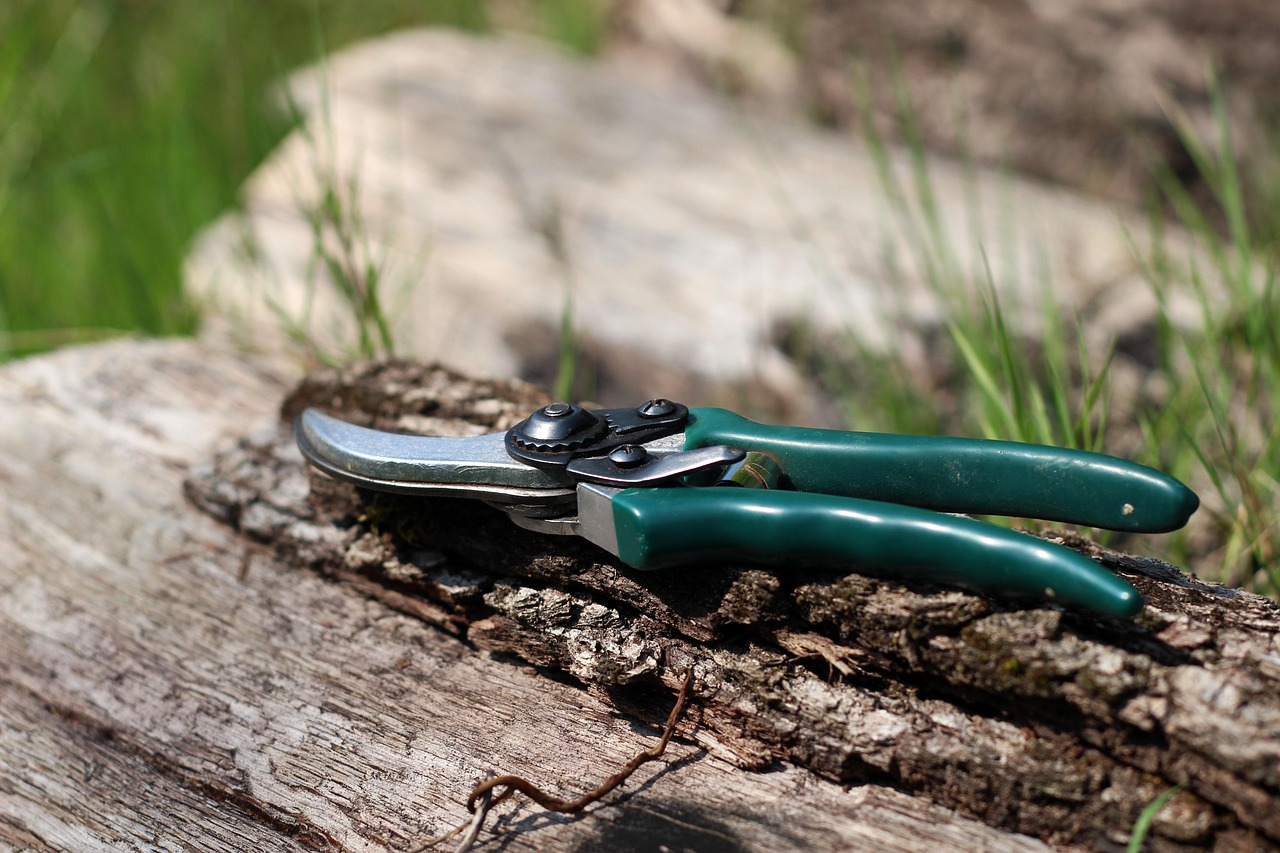Pruning techniques for coastal and high-wind areas focus on enhancing tree stability and resilience. Proper methods include selective pruning, reducing canopy weight, and maintaining a balanced shape to withstand harsh conditions. These practices minimize wind resistance and ensure the health of the trees in challenging environments.
Coastal and high-wind areas present unique challenges for tree care. The combination of salt-laden air, sandy soils, and strong gusts can significantly impact tree growth and health. Trees in these regions need to be robust and well-structured to survive the elements. One of the most effective ways to ensure their longevity is through proper pruning techniques.

Pruning is not merely a cosmetic practice; it plays a vital role in maintaining tree health. In coastal areas, trees are often subjected to salt stress, which can weaken them over time. By employing strategic pruning techniques, arborists can help trees develop a stronger root system and a more resilient structure. This is particularly important in regions where high winds can easily uproot or damage poorly maintained trees.
Understanding the Importance of Pruning
The primary purpose of pruning is to promote healthy growth and improve the tree’s overall shape. Effective pruning can lead to several benefits:
- Improved Airflow: Pruning opens up the canopy, allowing better airflow. This reduces the likelihood of disease and pest infestation.
- Enhanced Stability: A well-pruned tree has a lower center of gravity, making it less likely to topple during storms.
- Increased Sunlight Exposure: Proper pruning ensures that all parts of the tree receive adequate sunlight, promoting even growth.
- Better Aesthetic Appeal: Well-maintained trees enhance the landscape’s beauty, adding value to properties.
Understanding the specific needs of trees in coastal and high-wind areas is crucial for effective pruning. Different species respond differently to pruning techniques. Therefore, it is essential to identify the type of tree being pruned before applying any technique.

Common Pruning Techniques
There are several pruning techniques that are particularly effective in coastal and high-wind areas. These methods focus on reducing wind resistance and ensuring that trees can withstand harsh weather conditions.
Selective Pruning
Selective pruning involves removing specific branches to improve the tree’s structure. This technique helps maintain balance while reducing weight on the canopy. It is essential to remove dead or diseased branches first to promote healthy growth.
Crown Thinning
Crown thinning is another effective technique that involves selectively removing branches throughout the tree’s canopy. This method reduces wind resistance by allowing winds to pass through the tree rather than pushing against it. It also improves light penetration and air circulation.

Crown Reduction
Crown reduction reduces the overall height and spread of a tree while maintaining its natural shape. This technique is particularly useful for large trees in high-wind areas, as it decreases the tree’s exposure to strong winds. Care should be taken to avoid cutting back too much at once, as this can stress the tree.
Training Young Trees
Training young trees through proper pruning techniques can set a strong foundation for their future growth. Early intervention helps establish a well-balanced structure that can withstand environmental stresses. This includes removing competing leaders and encouraging a single trunk with strong lateral branches.
Timing and Tools for Pruning
The timing of pruning is crucial for its success. Generally, late winter or early spring is the best time to prune most trees in coastal areas. This timing allows trees to heal before they enter their active growth phase. However, specific species may have different needs, so it is essential to research individual types.

Using the right tools is equally important for effective pruning. Essential tools include:
- Hand Pruners: Ideal for small branches and detailed work.
- Loppers: Suitable for thicker branches that cannot be handled by hand pruners.
- Saws: Needed for larger limbs that require more force.
- Safety Gear: Always wear gloves and safety glasses to protect from debris.
In conclusion, understanding the specific needs of trees in coastal and high-wind areas is essential for successful pruning. It requires knowledge of various techniques, timing, and tools to ensure that trees remain healthy and resilient against harsh environmental conditions.
Pruning Techniques Specific to Coastal Trees
Coastal trees face unique challenges due to salt spray, high winds, and variable soil conditions. It is essential to adapt pruning techniques to suit these specific environmental factors. Certain species exhibit different growth patterns and resilience, which should influence your pruning strategy.
Common Coastal Tree Species
Familiarizing yourself with the common coastal tree species can greatly enhance your pruning effectiveness. Here are some notable examples:
- Southern Live Oak: Known for its strength and resilience, it requires selective pruning to maintain its iconic shape.
- Sea Grape: This tree is tolerant of salt and wind but benefits from crown thinning to promote airflow.
- Sand Pine: Sensitive to excessive moisture; appropriate pruning can help maintain its health.
- Red Maple: Although not strictly coastal, this species can thrive in coastal areas and requires careful pruning to manage growth.
Pruning Strategies for Coastal Trees
When working with coastal trees, consider the following strategies:
1. Wind Resistance Management
Reducing wind resistance is critical for coastal trees. Focus on these techniques:
- Remove Weak Branches: Identify and remove branches that are weak or growing at awkward angles. This helps prevent breakage during storms.
- Avoid Topping: Topping can create weak growth patterns. Instead, use crown reduction techniques that maintain the structural integrity of the tree.
2. Salt Tolerance Considerations
Salt can be detrimental to tree health. To mitigate this, consider:
- Pruning During Optimal Times: Prune before the growing season begins to allow trees to recover from salt stress.
- Encouraging Healthy Growth: Focus on removing diseased or damaged branches to promote overall health and resilience.
3. Seasonal Care
The timing of pruning varies based on local climate conditions. In coastal areas, it is vital to monitor seasonal changes. Here are some key points to consider:
- Pre-Season Pruning: Conduct any necessary pruning just before the growing season starts, usually in late winter.
- Post-Storm Assessment: After severe weather events, assess and prune any damaged branches promptly to prevent further issues.
Advanced Pruning Techniques
In addition to basic pruning methods, advanced techniques can provide enhanced results for trees in coastal regions.
Coppicing and Pollarding
Coppicing involves cutting a tree down to ground level to encourage new growth. Pollarding is similar but involves cutting branches at a higher point. Both techniques can help manage tree size and promote vigorous regrowth, which can be beneficial in high-wind areas.
Espalier Techniques
Espalier is a method of training trees to grow flat against a structure, which can be particularly useful in coastal gardens with limited space. This technique not only maximizes growing space but also reduces wind resistance by creating a more aerodynamic profile.
Pruning Tools and Equipment
The right tools are essential for effective pruning. Here is a more detailed look at pruning equipment suitable for coastal tree care:
| Tool | Description | Best Use |
|---|---|---|
| Bypass Pruners | Ideal for making clean cuts on live wood. | Used for small branches up to ¾ inch thick. |
| Anvil Pruners | Features a straight blade that cuts against a flat surface. | Best for dead or dry wood. |
| Crown Loppers | Larger cutting tool with long handles for leverage. | Useful for thicker branches up to 2 inches thick. |
| Pole Saw | A saw attached to a long pole for reaching high branches. | Effective for high branches without needing a ladder. |
A proper understanding and selection of tools can significantly enhance the efficacy of your pruning efforts. Always ensure tools are sharp and clean to make precise cuts, reducing the risk of infection.
The Role of Professional Arborists
While many homeowners can manage basic pruning tasks, the role of professional arborists cannot be overstated, especially in challenging environments like coastal areas. Certified arborists possess the specialized knowledge required for advanced pruning techniques and can assist in maintaining tree health over time.
Engaging a professional can also help in making informed decisions regarding which trees should be removed or preserved based on their health and environmental impact. In many cases, they can provide tailored strategies that reflect the unique characteristics of local ecosystems.
By understanding the specific needs and challenges of coastal trees, individuals can adopt effective pruning techniques that not only preserve the beauty of their landscapes but also ensure the longevity of their trees against the forces of nature.
Environmental Considerations in Pruning
Pruning in coastal and high-wind areas requires an understanding of the environmental factors that affect tree growth and health. These factors include soil conditions, salt exposure, and local wildlife. Addressing these aspects can enhance the effectiveness of pruning efforts.
Soil Conditions
The soil in coastal areas is often sandy and well-drained, which can lead to nutrient deficiencies. It is important to consider the following:
- Nutrient Management: Conduct soil tests to determine nutrient levels. Amendments like organic matter can improve soil fertility.
- Water Retention: Sandy soils drain quickly. Regular watering and mulching can help retain moisture around the root zone.
Salt Exposure
Salt exposure from ocean breezes or flooding can stress many tree species. Here are some strategies to mitigate salt damage:
- Choosing Salt-Tolerant Species: Select tree species known for their ability to withstand salt. Examples include Black Locust and Eastern Red Cedar.
- Regular Pruning: Maintain a healthy canopy to support the tree’s ability to cope with salt stress.
Wildlife Interactions
Coastal areas often host diverse wildlife that can impact tree health. Consider the following interactions:
Insects and Pests
Insects can pose a significant threat to trees, especially in coastal regions. Effective pruning can help manage pest populations:
- Monitoring for Infestations: Regularly inspect trees for signs of pests, such as holes, webs, or discoloration.
- Removing Infested Branches: Prompt removal of affected branches can curb the spread of pests.
Birds and Other Wildlife
Birds often nest in trees, and while they provide ecological benefits, they can also cause damage. Strategies to minimize wildlife impact include:
- Timing of Pruning: Avoid pruning during nesting season to protect bird habitats.
- Using Bird-Friendly Practices: When necessary, use humane deterrents to prevent birds from nesting in vulnerable areas.
Seasonal Pruning Techniques
The timing of pruning is crucial not only for tree health but also for the surrounding ecosystem. Seasonal changes impact tree growth cycles and should guide your pruning strategy.
Spring Pruning
Spring is an ideal time for pruning as trees begin to leaf out. Focus on the following:
- Removing Dead or Damaged Wood: This helps stimulate new growth and improves overall tree health.
- Crown Thinning: Enhance airflow and light penetration by selectively removing branches.
Summer Pruning
Summer pruning is less common but can be beneficial in certain situations:
- Shaping Young Trees: Use this time to guide young trees into their desired shape.
- Controlling Growth: Trim back excessive growth to maintain a manageable size.
Fall and Winter Pruning
Late fall and winter are typically considered dormant seasons for trees. The following are good practices during this period:
- Avoid Heavy Pruning: Limit heavy pruning during dormancy as it can stress trees before spring.
- Focus on Structural Pruning: This is a good time for structural improvements, such as removing crossing branches.
Potential Risks of Improper Pruning
Poor pruning practices can lead to significant issues for coastal trees. Understanding these risks can help promote better techniques.
Tree Stress and Health Issues
Improper pruning can lead to stress, which may manifest in several ways:
- Disease Vulnerability: Trees that are improperly pruned may become more susceptible to diseases due to open wounds.
- Pest Infestations: Stress can attract pests, leading to further complications for tree health.
Aesthetic Concerns
Poorly executed pruning can also impact the visual appeal of trees. Consider these factors:
- Unnatural Shapes: Incorrect cuts may lead to awkward growth patterns that detract from the tree’s natural beauty.
- Crown Doming: This occurs when too much foliage is removed, leaving a top-heavy tree prone to tipping over in high winds.
The Benefits of Regular Maintenance
Regular maintenance through appropriate pruning not only enhances tree health but also contributes to environmental stability. Here are some key advantages:
- Biodiversity Support: Healthy trees support local wildlife, providing food and habitat.
- Aesthetic Value: Well-maintained trees enhance the landscape, improving property values and community appeal.
- Environmental Protection: Trees play a critical role in preventing soil erosion and protecting coastal areas from storm surges.
By understanding the environmental considerations, seasonal strategies, potential risks, and benefits of regular maintenance, individuals can effectively manage their coastal trees. These practices not only ensure the longevity of the trees but also promote a healthy ecosystem that thrives in coastal conditions.
Long-Term Strategies for Coastal Tree Care
Maintaining healthy trees in coastal and high-wind areas requires a long-term commitment to care and management. Developing a comprehensive tree care plan can help address the specific challenges posed by these environments. Here are some strategies to consider:
Routine Assessments
Regular evaluations of tree health are crucial. By conducting routine assessments, you can identify potential issues before they escalate. Consider the following:
- Annual Inspections: Schedule annual inspections to evaluate tree health, structure, and overall appearance.
- Document Changes: Keep a record of the tree’s condition over time to recognize trends or recurring issues.
Soil Management Practices
Healthy soil is vital for tree growth, especially in coastal areas. Implementing effective soil management practices can lead to improved tree health:
- Mulching: Apply organic mulch around the base of trees to retain moisture and suppress weeds.
- Fertilization: Use slow-release fertilizers tailored for coastal species to ensure adequate nutrient availability.
Community Involvement and Education
Engaging the community can enhance local tree care efforts. Educating residents about the importance of proper pruning techniques and tree maintenance promotes a more sustainable environment:
- Workshops: Organize workshops that focus on tree care, pruning techniques, and environmental stewardship.
- Volunteer Programs: Encourage community members to participate in tree planting and maintenance initiatives.
The Role of Technology in Pruning
Advancements in technology can also play a significant role in tree care. Here are some technological tools that can aid in pruning and monitoring:
Drones and Aerial Surveys
Drones can provide aerial views of trees, helping arborists assess large areas quickly. This technology allows for:
- Mapping Tree Canopies: Identifying potential problem areas that may require special attention.
- Health Monitoring: Evaluating tree health through aerial imagery that can reveal stress signs before they are visible from the ground.
Mobile Applications
Several mobile applications are available that assist with tree identification, health assessment, and care recommendations. These apps often include features such as:
- Guided Pruning Techniques: Step-by-step instructions for various pruning methods tailored to specific species.
- Pest Identification: Tools for recognizing common pests and diseases affecting coastal trees.
Collaborating with Local Authorities
Collaboration with local authorities can strengthen tree preservation efforts. Here are ways to work together:
- Urban Forestry Programs: Partner with local government initiatives focused on enhancing urban forestry through education and resource sharing.
- Grants and Funding: Seek grant opportunities for community tree care projects that align with local environmental goals.
Final Thoughts
Pruning techniques for coastal and high-wind areas are essential for maintaining healthy trees that thrive despite challenging conditions. By understanding the unique environmental factors, implementing proper techniques, and committing to long-term care strategies, individuals can support the health of their trees while enhancing the surrounding ecosystem.
The importance of regular pruning cannot be overstated. It not only improves tree stability but also contributes to biodiversity, aesthetic appeal, and environmental protection. Through community engagement, technology integration, and collaboration with local authorities, we can ensure that our coastal landscapes remain vibrant and resilient for generations to come.
In conclusion, effective tree management in coastal regions is a multifaceted approach that requires knowledge, dedication, and community involvement. By prioritizing the health of our trees through informed pruning practices, we contribute to a sustainable environment that supports both human enjoyment and wildlife habitat.
